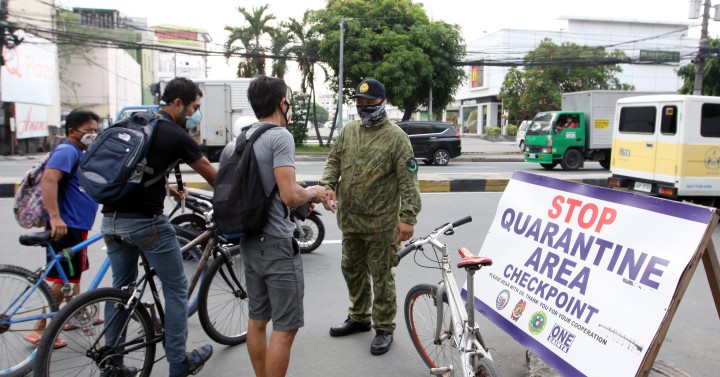Areas currently under general community quarantine (GCQ) cannot yet shift to the more relaxed modified general community quarantine (MGCQ), according to Health Secretary Francisco Duque III.

From May 15 to 31, the National Capital Region Plus bubble, including the nearby provinces of Bulacan, Rizal, Laguna and Cavite, were under GCQ “with restrictions.”
According to Duque, the contribution of NCR to the case load of COVID-19 has decreased but the number of cases in other areas is on the rise – a situation he called “frightening.”
He cited Iloilo City, Puerto Princesa in Palawan, Calabarzon and some areas in the Visayas and Mindanao.
“These areas are contributing to our cases now. In NCR, the cases are declining although the case rates or what we call the daily attack rate is still high. We are not out of the woods yet,” he added.
Earlier, DOH chief epidemiologist Alethea de Guzman reported that all regions in the Visayas posted an upward trend in COVID-19 cases, with Western Visayas having the highest and fastest growth.
In Mindanao, Zamboanga Peninsula and Northern Mindanao had the highest spike in cases.
At a briefing, Vergeire said 71 percent of ICU beds in the Cordillera Autonomous Region, Cagayan Valley, Caraga, Calabarzon and Central Luzon are occupied, while in Zamboanga Peninsula the figure is slightly lower at 70 percent. “They are all in high-risk level now,” she maintained.

Experts studying the coronavirus outbreak in the country have recommended retaining the general community quarantine (GCQ) status of Metro Manila and adjacent provinces Cavite, Laguna, Rizal, and Bulacan or “NCR Plus” in June.
For the past days, the country has been logging around 4,000 to 6,000 new cases on the average, which is relatively lower than when the surge in cases happened in March to April.
With additional reports: The Philippine Star, Sheila Crisostomo, Rappler.com, Bonz Magsambol
Photo Sources: malaya.com.ph, rappler.com, pia.gov.ph






